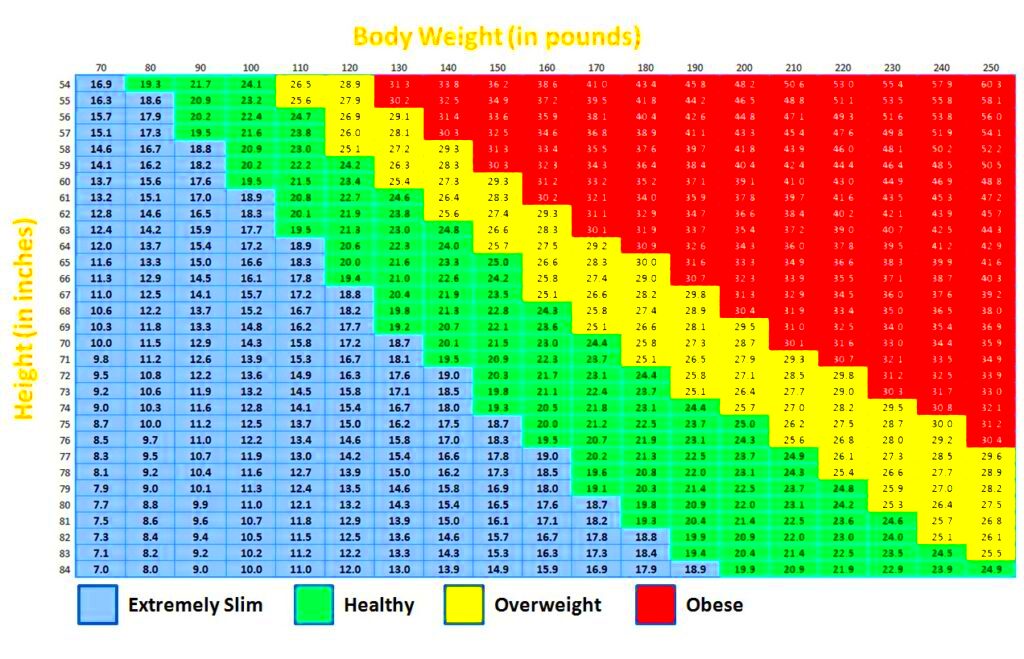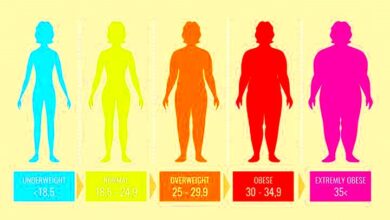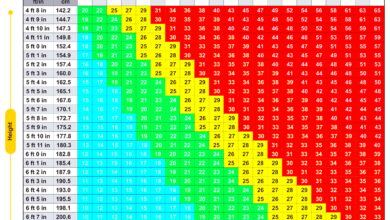The Role of BMI in My Fitness Routine and What I’ve Learned Along the Way

When I first started my fitness journey, Body Mass Index (BMI) seemed like just another number to track. It was only when I began to take my health seriously that I realized BMI could be more than just a figure on a scale—it became a reflection of my progress and struggles. This post is a glimpse into how BMI has shaped my fitness routine and the lessons I’ve learned along the way. From initial misconceptions to valuable insights, my experience with BMI has been anything but ordinary.
Understanding BMI – A Personal Perspective

Body Mass Index, or BMI, is a simple tool used to assess body weight relative to height. To put it plainly, it’s calculated using the formula:
| Weight (kg) | Height (m²) | BMI Formula |
|---|---|---|
| Weight | Height | BMI = Weight / (Height x Height) |
When I first heard about BMI, I thought it was a one-size-fits-all approach. But over time, I discovered that it’s not just about numbers. For me, BMI became a way to gauge my progress. I learned that while it’s a useful indicator, it doesn’t tell the whole story about one’s health. It doesn’t account for muscle mass, bone density, or overall fitness, which can be misleading for those who are more muscular or have different body types.
For instance, my initial BMI readings were quite high, making me feel disheartened. However, after focusing on my overall fitness rather than just the number, I realized that BMI was just a part of the equation. This personal insight helped me understand that being healthy is more than just meeting a number—it’s about feeling good and being active.
How BMI Became a Part of My Fitness Routine

In the early days, BMI was a basic measure I would glance at occasionally. But as my fitness journey evolved, it started playing a more significant role. Here’s how it became an integral part of my routine:
- Goal Setting: I used BMI as one of the benchmarks for setting fitness goals. Instead of obsessing over the number, I set realistic goals to improve my overall health.
- Tracking Progress: Regularly checking my BMI helped me monitor changes and adjust my workout and diet plans accordingly. I kept a simple chart to track fluctuations and noticed patterns.
- Adjusting Strategies: If my BMI didn’t move as expected, I used it as a cue to reassess my fitness strategy. This might mean tweaking my exercise routine or consulting with a nutritionist.
One memorable instance was when my BMI plateaued despite rigorous workouts. It was frustrating, but it prompted me to look deeper. I discovered that my muscle mass was increasing, which wasn’t reflected in my BMI. This experience taught me the importance of combining BMI with other metrics like body fat percentage and overall fitness levels.
In essence, BMI became a useful tool when used in conjunction with other health indicators, helping me fine-tune my approach to fitness and maintain a balanced perspective.
Challenges I Faced with BMI Measurements

While BMI can be a helpful gauge, it’s far from perfect, and my journey with it was filled with challenges. One of the first hurdles I encountered was the misleading nature of BMI for those who are more muscular. When I started lifting weights, my BMI suggested I was overweight, but I felt stronger and healthier than ever. This discrepancy made me question the validity of the measurement.
Another challenge was dealing with fluctuations in BMI due to factors like water retention or muscle gain. For instance, after a particularly intense workout week, my BMI spiked, causing unnecessary worry. I had to remind myself that BMI is a snapshot, not a complete picture of health. I also found that my BMI didn’t account for fat distribution, which is crucial for understanding overall wellness.
Here are some specific issues I faced:
- Misleading Results: BMI sometimes suggested I was overweight or underweight when, in reality, my body composition was healthy.
- Fluctuations: Changes in water weight or muscle mass could skew my BMI readings, causing confusion.
- Emotional Impact: Seeing a higher BMI despite feeling fit led to unnecessary stress and self-doubt.
These challenges taught me the importance of not relying solely on BMI for assessing my health. It became clear that a holistic approach was necessary to truly understand my fitness levels.
Learning from My BMI Experiences: Insights and Adjustments
My experiences with BMI have been both enlightening and educational. Over time, I learned to approach BMI as one of many tools in my health toolkit, rather than the sole indicator of my fitness. Here are some key insights I gained:
- Context Matters: I learned that BMI should be interpreted in the context of other factors like body composition, lifestyle, and fitness levels. It’s not a standalone measure.
- Embrace the Journey: Instead of fixating on the numbers, I focused on how I felt physically and mentally. This shift in perspective helped me stay motivated and positive.
- Adjusting Goals: I adjusted my fitness goals based on a combination of BMI, body measurements, and overall well-being, rather than sticking rigidly to BMI targets.
For example, I used to worry excessively if my BMI didn’t drop as expected. But then, I realized that my muscle gain was contributing to the numbers. I learned to appreciate the progress in strength and endurance, even if my BMI didn’t reflect it. This broader understanding helped me make informed decisions about my diet and exercise routines.
In essence, my BMI experiences taught me to value the journey of health and fitness rather than just focusing on the numbers.
Integrating BMI with Other Fitness Metrics
As I continued to refine my fitness routine, I realized that relying solely on BMI wasn’t enough. Integrating BMI with other metrics provided a more comprehensive view of my health. Here’s how I did it:
- Body Fat Percentage: Measuring body fat percentage helped me understand how much of my weight was fat versus muscle. It gave a clearer picture of my body composition.
- Waist-to-Hip Ratio: This metric helped me assess fat distribution, which BMI doesn’t account for. It became a useful tool for tracking changes in my body shape.
- Fitness Assessments: Regular fitness assessments, like strength tests and endurance measurements, provided additional insights into my overall health and progress.
For example, while my BMI suggested I was slightly overweight, my body fat percentage showed I had a good amount of lean muscle. Similarly, tracking my waist-to-hip ratio revealed that my body fat was primarily around my abdomen, prompting me to adjust my workouts.
Combining these metrics allowed me to set more balanced goals and make more informed decisions about my health. It emphasized that fitness is multifaceted, and focusing on a range of indicators provided a clearer, more holistic view of my well-being.
Advice for Those Considering BMI in Their Fitness Journey
If you’re incorporating BMI into your fitness journey, here’s some advice from my own experience. I’ve found that while BMI can be a useful tool, it’s essential to approach it with a balanced perspective. Here’s what I’ve learned along the way:
- Don’t Rely Solely on BMI: Use BMI as one of many metrics. It’s a helpful indicator, but it doesn’t capture the whole picture of your health. Combine it with other measures like body fat percentage and muscle mass.
- Set Realistic Goals: Understand that BMI is a general guideline and not a definitive measure of fitness. Set realistic and personalized goals based on a comprehensive view of your health.
- Monitor Changes Over Time: Track your BMI trends rather than focusing on individual readings. This approach gives a better sense of your overall progress.
- Consult Professionals: For a more accurate assessment, consult with fitness and health professionals. They can provide personalized insights and recommendations based on a range of factors beyond BMI.
For instance, when I first started paying attention to BMI, I was fixated on hitting a specific number. It led to unnecessary stress and confusion. Over time, I learned to appreciate the broader picture of my health and fitness, which made my journey more enjoyable and effective.
Reflecting on My Fitness Journey with BMI
Looking back, my journey with BMI has been quite a rollercoaster. I’ve seen it as both a challenge and a guide. Initially, I was overly concerned with the number, but as I gained more experience, I learned to integrate it into a more comprehensive understanding of my health.
Here’s what I’ve taken away from my experiences:
- Growth and Learning: My understanding of BMI evolved from viewing it as a strict measure to using it as one part of my fitness puzzle. This shift helped me focus on holistic health rather than just numbers.
- Embrace the Journey: I’ve learned to embrace the ups and downs. My BMI numbers fluctuated, but my overall fitness and well-being improved, which was more rewarding than any number on a scale.
- Focus on Health, Not Perfection: The journey taught me to prioritize feeling good and being healthy over achieving a specific BMI target. This approach has been far more satisfying and sustainable.
In essence, my journey with BMI has been about learning and growth. It’s a tool that, when used wisely, can offer valuable insights but should never be the sole measure of your success.
FAQ
What is BMI and why is it important?
BMI, or Body Mass Index, is a measure that uses your weight and height to estimate body fat. It’s important because it provides a quick and simple way to gauge whether you’re underweight, normal weight, overweight, or obese. However, it doesn’t measure body fat directly.
Can BMI be misleading?
Yes, BMI can be misleading. It doesn’t account for muscle mass, bone density, or fat distribution. For instance, a muscular person may have a high BMI but low body fat, while someone with a lower BMI might have high body fat.
How can I use BMI effectively in my fitness journey?
Use BMI as a starting point, not a definitive measure. Combine it with other metrics like body fat percentage and fitness assessments. Track trends over time and focus on overall health rather than a specific number.
Should I consult a professional regarding my BMI?
Consulting a health or fitness professional can provide personalized insights. They can help you understand your BMI in the context of your overall health and create a balanced fitness plan tailored to your needs.
Conclusion
Reflecting on my journey with Body Mass Index (BMI), it’s clear that this number has played an evolving role in my fitness routine. Initially, I saw BMI as a rigid measure of success. However, as I grew more experienced, I realized its limitations and began integrating it into a broader health context.




